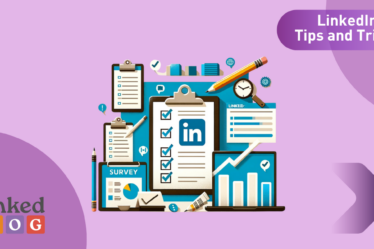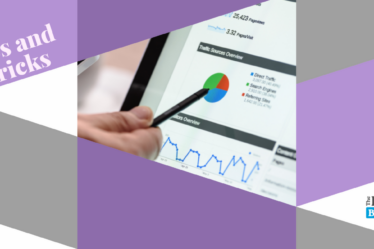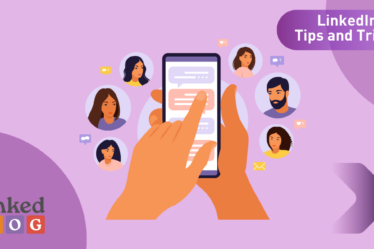
Until a few years ago, companies used LinkedIn only to find suitable candidates for their teams. Today, however, the professional network is a powerful tool in another pillar of building employer branding: communication with current employees.
In the era of social networks, the internal portals seem obsolete, and that’s why managers are looking for other adequate ways to establish contacts with their teams. This creates a special expectation for communication and HR experts, and it is no coincidence that LinkedIn is one of the first places to focus on. How to engage successfully employees on LinkedIn is surely an important topic for many companies, especially when they’re working remotely. The following tips can be more than helpful.
Start with a clear message: “We need you!”
Social networks are in general private areas, but with LinkedIn, it is a bit different. In the professional platform, most users are the face of a corporate brand – they represent not only themselves but also their company. No matter what level in the hierarchy the employees are, this becomes a fact the moment they connect their accounts with the LinkedIn page of the company through new job positions in their Experience sections. And the sooner they realize that their presence in the professional network develops not only their personal brand but also the brand of their company, the more effective this positioning will be for the company itself. LinkedIn data is clear – companies with engaged teams have 8 times more visits to their pages and 4 times faster growth of followers.
Both new and current employees should hear the message “We need you!” from their employer,
when it comes to communication on LinkedIn. The algorithm has not been particularly favourable to brands for a long time in terms of opportunities for expanding their pages, therefore employees and their personal networks can help a lot. Once every three months, remind the people in your company that it is important to share the content from the official company page in their profiles too. You can even take things to the next level by convincing the most active employees to help with ideas for topics for updates, and why not with their own series/rubrics.
Motivate them through literally all channels of internal communication: the corporates portal, your internal newsletter, and even through special emails to everyone in the company. Of course, the message here is especially important – focus on the benefits to the employees.
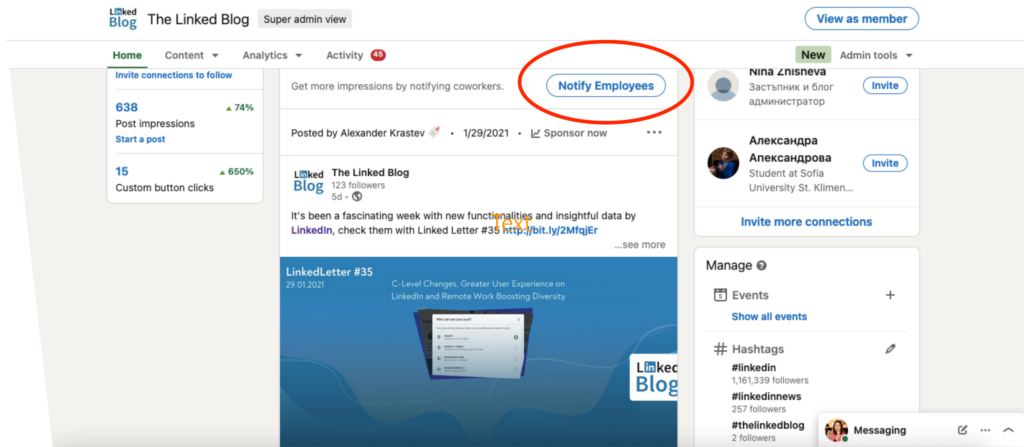
LinkedIn has made sure you have a powerful tool within the platform itself – once every 24 hours you can use the Notify Employees button for important publications on the company page. Thus, all employees who have indicated they currently work in your company will receive a notification about the important post. The rest of the sharing process is a matter of corporate culture and habits.
Under the spotlight
According to LinkedIn, users are 60% more likely to engage with posts from their peers than with other types of content. The same phenomenon is observed when it comes to publications about their colleagues. Page visitors and followers of the pages are also engaged: when the content is related to people from the companies, often the reactions, comments and shares flow. No surprise here – is there anything more attractive in business than an organization that is proud of its employees?
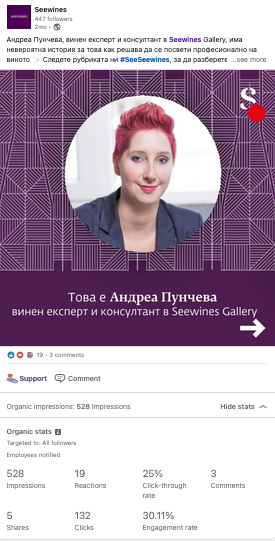
A great personal success came last year after a LinkedIn corporate training with the marketing team of one of the big local telecoms. Before our meeting, they were continuously presenting their employees. Weeks later I was pleasantly surprised by the fact that they already had three different rubrics. I believe there is no need to clarify that the engagement with these publications has also increased.
Remember that this type of communication works not only for increasing the loyalty of the current employees, but also for the strength of the employer brand to potential candidates. Few wouldn’t be happy to see their own photo next to those of the senior managers.
Internal LinkedIn Groups
Building strong communities within companies is a way of maintaining the loyalty of current employees, and there is no better place to unite professional communities than the LinkedIn Groups. If your brand doesn’t have its own portal for internal communication, and the use of Facebook during working hours is not tolerated, then my advice is to try with a closed (unlisted) group in the professional network.
The main advantage here is the ability to create a private community in a platform that is free of information noise. All you need is one or two administrators to make sure there are enough content and active discussions in the group. News from and about the company, internal messages to the teams, various elements of the corporate culture – these are just a few ideas to make moderators’ lives easier. Disadvantages shouldn’t be discarded as well – the main one here is the eventual challenge of making sure that only current employees have access to the group.
Once a week, administrators have the opportunity to “Recommend” a post – a notification will be sent automatically to all group members.
Another wonderful way for C-level’s messages to reach everyone in the company, don’t you think?
Last but not least, LinkedIn is a powerful tool not only for employer branding, but for social selling as well. Don’t be surprised if the active work with your teams leads not only to increased engagement with the page’s content, but also to better sales outcomes. In fact… I’m sure it will happen.
This article was first published on Forbes Bulgaria.
The Linked Blog is here to help you or your brand have the best possible LinkedIn presence, so feel free to contact us if you need help! See what else we can do for you here.

